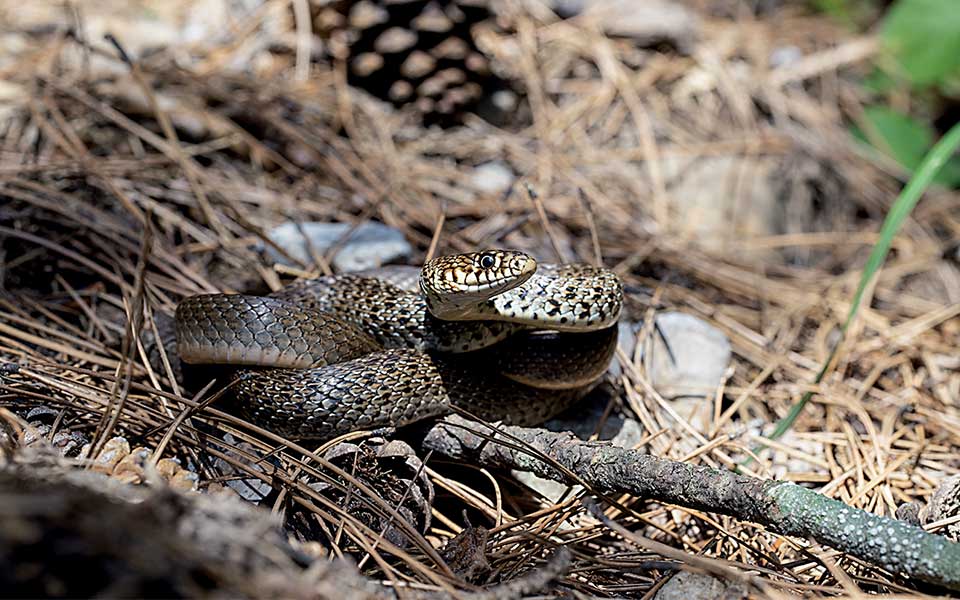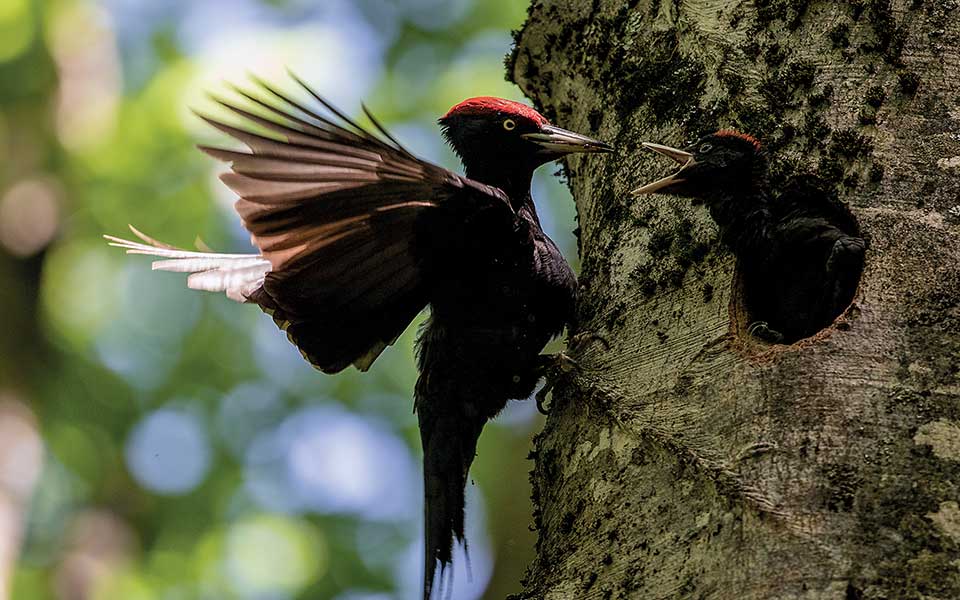Ever since ancient times, Mt Olympus has provided an abundance of resources for the area’s residents; timber, coal, resin, ice and food for farm animals covered the needs of the nearby communities. And for strangers to the area, the mountain has presented challenges and discoveries that have been sources of fascination for visitors since antiquity.
As far back as the 2nd century BC, geographers took on the task of measuring its exact height. Cartographers created precise maps of the broader area and assigned toponyms to the different locations. Botanists still study its wealth of flora, and nature buffs continue to explore its every corner.
The first official ascent of the country’s highest peak (2918m) was recorded some 100 years ago and acted as a trigger for numerous new attempts and for the opening of new paths and trails.
Olympus was named Greece’s first national park in 1938, its first Biosphere Reserve in 1981 and is a listed archaeological site as well, thanks to its important historical legacy.

© Savvas Vasileiadis
Rare and Diverse Flora & Fauna
Mt Olympus’ greatest asset, however, may be its flowers. It is a botanical treasury hosting 1700 different species and subspecies. Of these, 27 are endemic. The most well known of these is Jankaea heldreichii, a relict species from the Tertiary Period. You can see it flowering between May and August in shady spots with a northern exposure and at elevations ranging from 250 to 2200 meters.
You’ll also come across around 60 different types of wild orchid, tulips, lilies, cornflowers and many other rare, subalpine species.
The fauna is no less impressive, as the mountain hosts horned larks, alpine accentors, two to four pairs of golden eagles, nine out of Greece’s ten species of woodpecker, and the rare and mysterious wallcreeper, which is remarkably adept at clinging to sheer cliffs in its search for food.
A migratory passage for large and small birds of prey, Mt Olympus offers the opportunity to spot hundreds of short-toed snake eagles and European honey buzzards circling overhead in March and September, at low and medium altitudes.
It is also ideal for photographing and observing butterflies; you can find some 170 of the 250-odd species that live in Greece. It’s also part of the route for bears moving down from the north, from Epirus and Macedonia, in search of new territories in Pilio and Thessaly.

© Savvas Vasileiadis

© Savvas Vasileiadis
The presence of limestone has led to the formation of a karst landscape with hundreds of caves and sinkholes that are home to cave crickets, other arthropods, and mammals such as bats. Every so often at a clearing, you’ll hear the special bark that roe deer use as an alarm, and you may spot wildcats stalking prey at elevations from 400 to 2200 meters.
The mammal that has become the symbol of Mt Olympus is the Balkan chamois, a goat-antelope. You’ll see lone males above 1600m, or, depending on the season, come across herds, small or large, in the alpine meadows. You’ll see females with their young on many a steep crag, nook and shelf just below Mytikas and the Throne of Zeus. Some 250 of these animals live on Olympus, making this one of the largest populations in the country.
Explore with the Experts
To find out more about the wonderful treasures the mountain holds, it’s best to talk to those who know this area. Whether they’re people who live here or regular visitors, they are always happy to share their knowledge.
You may, for example, come across Irini, an octogenarian often seen hiking the mountain’s trails, who’ll tell you about her last ascent to Mytikas. Or Jacques and Morisette from Paris, who have come trekking every year for the past 30 years.
There’s also Michalis, who cleans every bit of trash he finds from the trails and is always looking for an excuse to recount tales about Livadaki, the old springs and the secret waterfalls of Enipeas or the peak at Kosti. He’s also happy to discuss the daily lives of the people who once lived here, as well as those who still do, right in the heart of the national park.

© Savvas Vasileiadis
As you head up through the foothills from Litochoro, you’ll come to where I work, the National Park Information Center, where Areti and I are on hand to give you a warm welcome and all the information you’ll need for your excursion.
You’ll probably come across Barba-Yorgos, the most photographed shepherd in Greece, with his flock, and he’ll bid you good morning in his heavy local accent.
Further up, Giorgos and Melina are the new managers of the Boudolas Refuge, while Dimitris and his team are usually posted at Prionia. Once you reach the Monastery of Aghios Dionysios, you may be lucky enough to find Father Paisios, a kindly monk who’ll direct you to the old monastery and the Cave of Aghios Dionysios.
Further up, in the higher refuges of Olympus, you’ll come under the care and guidance of Maria, Nektarios, Larry, Nikos, Alex and Mike, all mountain folk with the right mix of professionalism and consideration for anybody who may get into trouble in what can be a demanding and unpredictable environment.
Nikos, a nature buff and explorer who is keenly protective of Olympus’ archaeological treasures and concerned about the impact of human activities on the area’s wolves and bears, can usually be found somewhere on the Petra-Bara-Kokkinopilos trail.
Tolis, a tireless trekker, tends to stick to higher elevations, while still further up you’re likely to find Ilias, another intrepid hiker who has probably walked all 350km of Olympus’ trails in every season and discovered everything about them there is to know.
So many of us have fallen under the spell of this beautiful mountain and its rich natural bounty. Why not pay a visit, too, and see for yourself what’s so special about Greece’s “natural Parthenon”?











